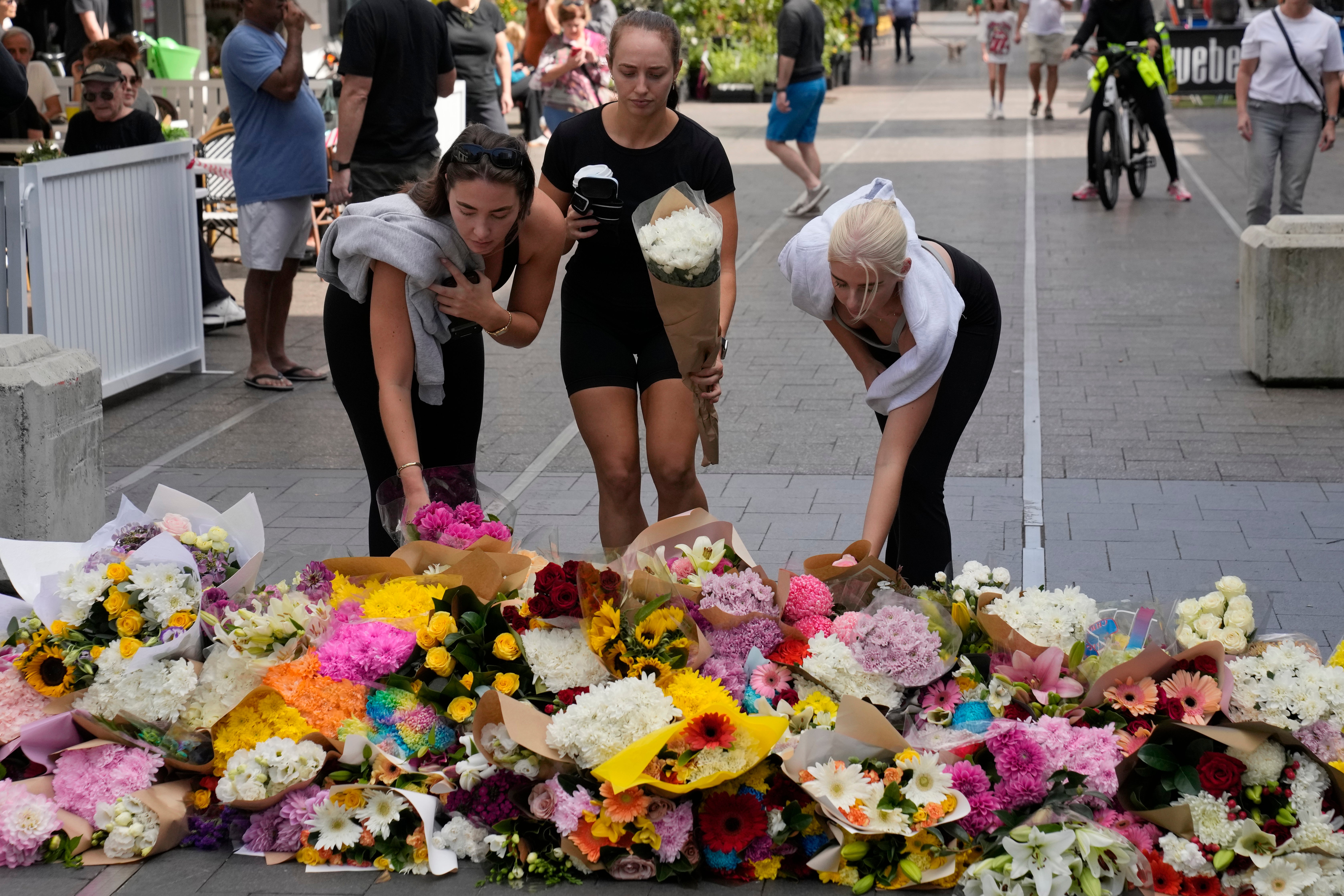What’s really to blame for the Sydney stabbings
I’m a psychologist, writes Dr Jessica Taylor – and I can tell you that attacks like these are rarely ‘random’, ‘unpredictable’, ‘unrelated’ and ‘unpreventable’. The real ‘monster’ here is misogyny


Devastating events unfolded this weekend as 40-year-old Joel Cauchi raged through Westfield Bondi Junction in Sydney on a Saturday afternoon, stabbing 18 people. So far, the majority of victims, both dead and in critical conditions in hospital, have been women and girls.
I watched the footage in disbelief, the background horribly familiar. I was in Bondi Junction myself, a few months back, while on a book tour with my wife.
But what came next was also uncomfortably familiar: police saying it was “obvious” Cauchi was targeting and attacking women.
New South Wales police commissioner Karen Webb went as far as to say the videos “speak for themselves”. “It’s obvious to me and it’s obvious to detectives that it seems to be an area of interest that the offender had focused on women and avoided the men,” she said. “It has been reported that five of the deceased are women and the majority of victims in hospital are also women.”
Yet Anthony Cooke, the NSW police assistant commissioner, maintained: “There is still, to this point no information we have received, no evidence we have recovered, no intelligence that we have gathered that would suggest that this was driven by any particular motivation, ideology or otherwise.”
And so, the conversation must be had: what is the “ideology” that drives a man to brandish a long knife, run into a mall and murder as many women as he can? And why does nobody dare mention the “M” word? No, not “murder” – but “misogyny”.
We see incidents like this, time and time again – incel murderer Elliot Rodger springs to mind – but we continually fail to acknowledge misogyny as an ideology.
But why? Who do we keep denying that hatred of women is both a crime and a deep-rooted mindset, flaunted by shameless misogynists like Andrew Tate? Just look at the comments from the Sydney attacker’s father, Andrew Cauchi, who told reporters on Monday he was devastated by the news of the attack and revealed he has previously confiscated knives from his son: “He wanted a girlfriend and he has no social skills and he was frustrated out of his brain,” he told The Australian newspaper.
Here we can clearly see an “incel” mindset, but a refusal to name it for what it is.
Yet other ideologies are readily attributed when crimes of murder and rape are committed. Academic research since the Nineties has argued that ideology plays a crucial role in target selection in events like these.
People are all too comfortable labelling neo-nazi “ideologies”, right- or left-wing “ideologies”, Islamist “ideologies”, trans “ideologies”, terror “ideologies” and racist “ideologies” – but not hatred of women.
Indeed, we have seen this play out on social media in the past 48 hours thanks to commentators Julia Hartley-Brewer and Rachel Riley, who both publicly – and wrongly – posted that Cauchi was clearly motivated by Islamist ideologies.
Hartley-Brewer stated that Cauchi was an “Islamist terrorist” with absolutely no evidence, before later apologising; and Riley is facing calls on social media for her to be sacked by Channel 4 after falsely suggesting the fatal incident was linked to a rise in support for Palestine.
“For six months now, people have been out on our streets proudly calling for the ‘Intifada Revolution’,” she tweeted. “If you want to know what ‘Globalised Intifada’ looks like, see the Sydney Mall.” The Countdown star later said she was “sorry” if her post was “misunderstood”.
Sometimes, homophobic and transphobic hate crimes are rightly called out for what they are – as in the tragic case of the murder of teenager Brianna Ghey. But why not misogynistic ones, too? Where is the horror, the outrage, the condemnation, when women are killed simply for being women?
Misogyny, after all, is the oldest prejudice in the world. Long before we had white supremacy, classism, transphobia and homophobia, women and girls were positioned and treated as “inferior”. They were the original oppressed class.
Even Aristotle (who lived circa 384–322BC) wrote: “Women are defective, deformed versions of men” – a quote that historians and philosophers have long ignored while continuing to laud the Ancient Greek scholar as one of the greatest philosophers of all time.
This positioning of women and girls as inferior, stupid, insane or “hysterical” sex objects has been woven into the very fabric of our global society. They’re so mundane, so routine, that we just don’t see the horror in it.
After all, when a woman or girl is killed by someone in her own family every 11 minutes across the world on average, it hardly marks itself out as “special” or a zealous belief, does it?
Even when Nottingham Police became the first police force to acknowledge misogyny as a form of hate crime, nothing really came of it. Most police forces I teach don’t see the massive rates of domestic violence or sexual violence as related to misogyny. When I show them the connection, they seem shocked. Frankly, they are fighting a crime they don’t even understand.
Boris Johnson, when he was prime minister, ruled out the possibility of making misogyny a hate crime – and used the excuse that it would “overload the justice system” and make the fight against rape and domestic violence harder.
And yet, the signs of this ideology are all around us. We have an uprising of incel culture online, members of the elite – from politicians to movie stars – abusing women and girls, misogynistic influencers like Tate charged with rape and trafficking women, street crimes like cat-calling and cyber-flashing, a backlash and hatred of the #MeToo movement, even as women continue to report increasing instances in a wide range of professions (including, most recently, the NHS) and the murders of women like Sarah Everard, Zara Aleena and Sabina Nessa.
In this country alone, at least 350 women have been killed by men – the equivalent of one woman dying every three days – since serving police officer Wayne Couzens killed Sarah Everard on 3 March 2021.
We also see a continued rise in sexual and domestic violence rates: knife crime against women has doubled in the past five years and domestic abuse and sexual violence against transgender and non-binary people has surged by 18 per cent. Nearly one in four rape victims are girls under the age of 16. And still, nearly 70 per cent of rape victims drop out of investigations in England and Wales.
It fascinates me that when a man deliberately and exclusively murders or rapes women and girls, the discussion of misogyny as the prime motivator is muted.
Why is violence against women and girls (VAWG) so commonly attributed to mental illness, as in Cauchi’s case? If you’re going to keep claiming that “mental illness” causes men to go on killing sprees, you are going to need to explain why millions of people also diagnosed with the exact same “mental illnesses” never hurt a fly – and why there is not a single “mental illness” in the DSM/ICD disease and illness classifications listed as increasing the risk of committing mass murder.
And perhaps you could also explain why women diagnosed with these same “mental illnesses” don’t seem to go on shooting and stabbing sprees?
I’m a psychologist – and I can tell you that many murderers make active choices, with capacity. They go and act out those choices because they can, because they want to, because they will get something out of it and because they enjoy it. It is rarely “random”, “unpredictable”, “unrelated” and “unpreventable”.
Yet rather than us addressing the wider systemic and social hatred of women and girls in a misogynistic world, we point to something internal and individual – psychiatric conditions. We claim they must have been schizophrenic, bipolar or sociopathic. We invoke social problems: they had a hard childhood, were depressed, had no social skills, they were lonely. We say they “just” wanted girlfriends, as if to feel sorry for them.
Rather than turn men into “monsters” with unsolveable conditions – or excuse them by blaming women for not giving them love and sex – we need to name the problem to be able to solve it.
The real “monster” here isn’t mental illness: it’s misogyny.
This article was written before news emerged of the stabbings at the Christ The Good Shepherd Church in Sydney on Monday

Join our commenting forum
Join thought-provoking conversations, follow other Independent readers and see their replies